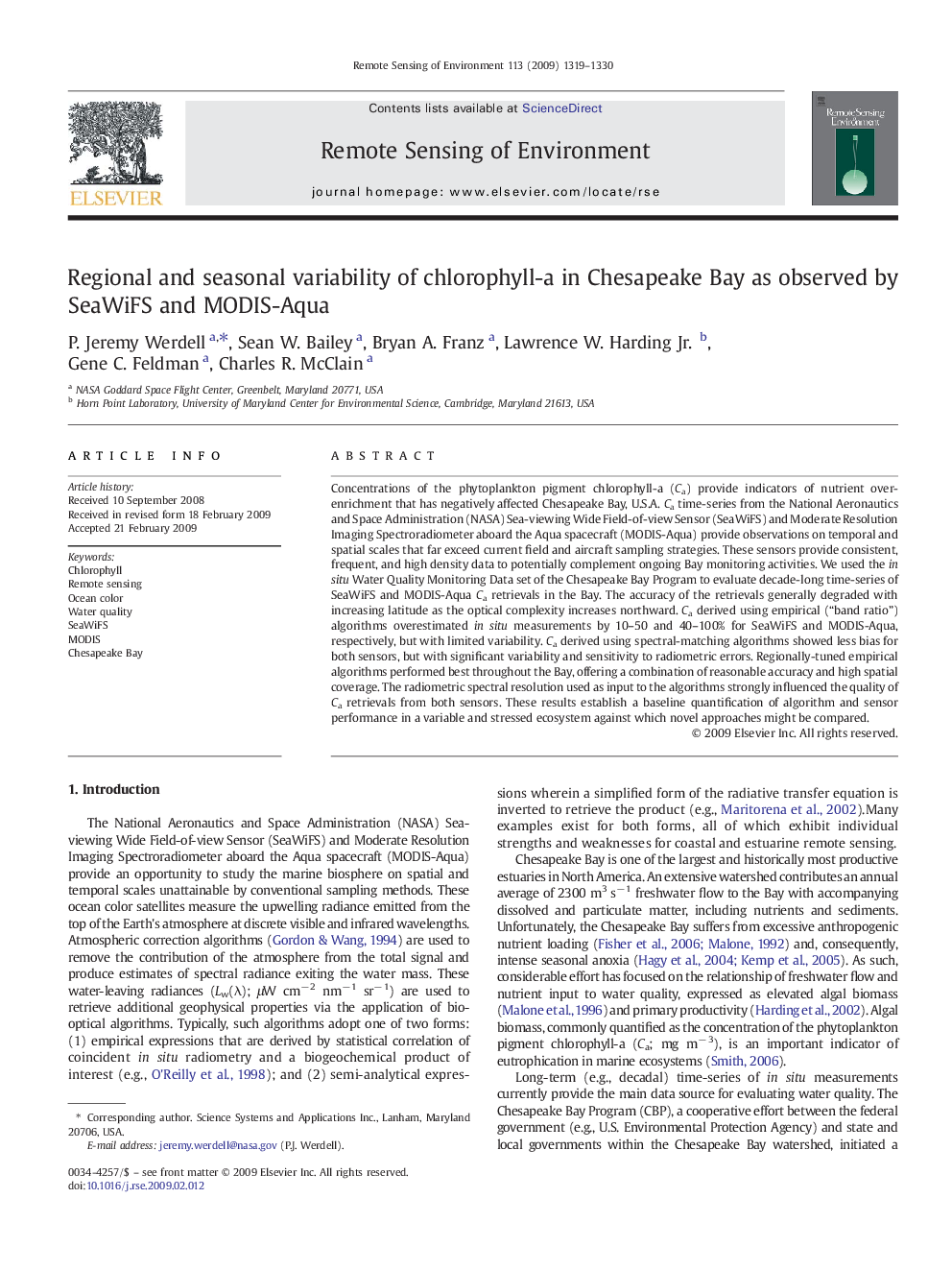| Article ID | Journal | Published Year | Pages | File Type |
|---|---|---|---|---|
| 4460236 | Remote Sensing of Environment | 2009 | 12 Pages |
Concentrations of the phytoplankton pigment chlorophyll-a (Ca) provide indicators of nutrient over-enrichment that has negatively affected Chesapeake Bay, U.S.A. Ca time-series from the National Aeronautics and Space Administration (NASA) Sea-viewing Wide Field-of-view Sensor (SeaWiFS) and Moderate Resolution Imaging Spectroradiometer aboard the Aqua spacecraft (MODIS-Aqua) provide observations on temporal and spatial scales that far exceed current field and aircraft sampling strategies. These sensors provide consistent, frequent, and high density data to potentially complement ongoing Bay monitoring activities. We used the in situ Water Quality Monitoring Data set of the Chesapeake Bay Program to evaluate decade-long time-series of SeaWiFS and MODIS-Aqua Ca retrievals in the Bay. The accuracy of the retrievals generally degraded with increasing latitude as the optical complexity increases northward. Ca derived using empirical (“band ratio”) algorithms overestimated in situ measurements by 10–50 and 40–100% for SeaWiFS and MODIS-Aqua, respectively, but with limited variability. Ca derived using spectral-matching algorithms showed less bias for both sensors, but with significant variability and sensitivity to radiometric errors. Regionally-tuned empirical algorithms performed best throughout the Bay, offering a combination of reasonable accuracy and high spatial coverage. The radiometric spectral resolution used as input to the algorithms strongly influenced the quality of Ca retrievals from both sensors. These results establish a baseline quantification of algorithm and sensor performance in a variable and stressed ecosystem against which novel approaches might be compared.
